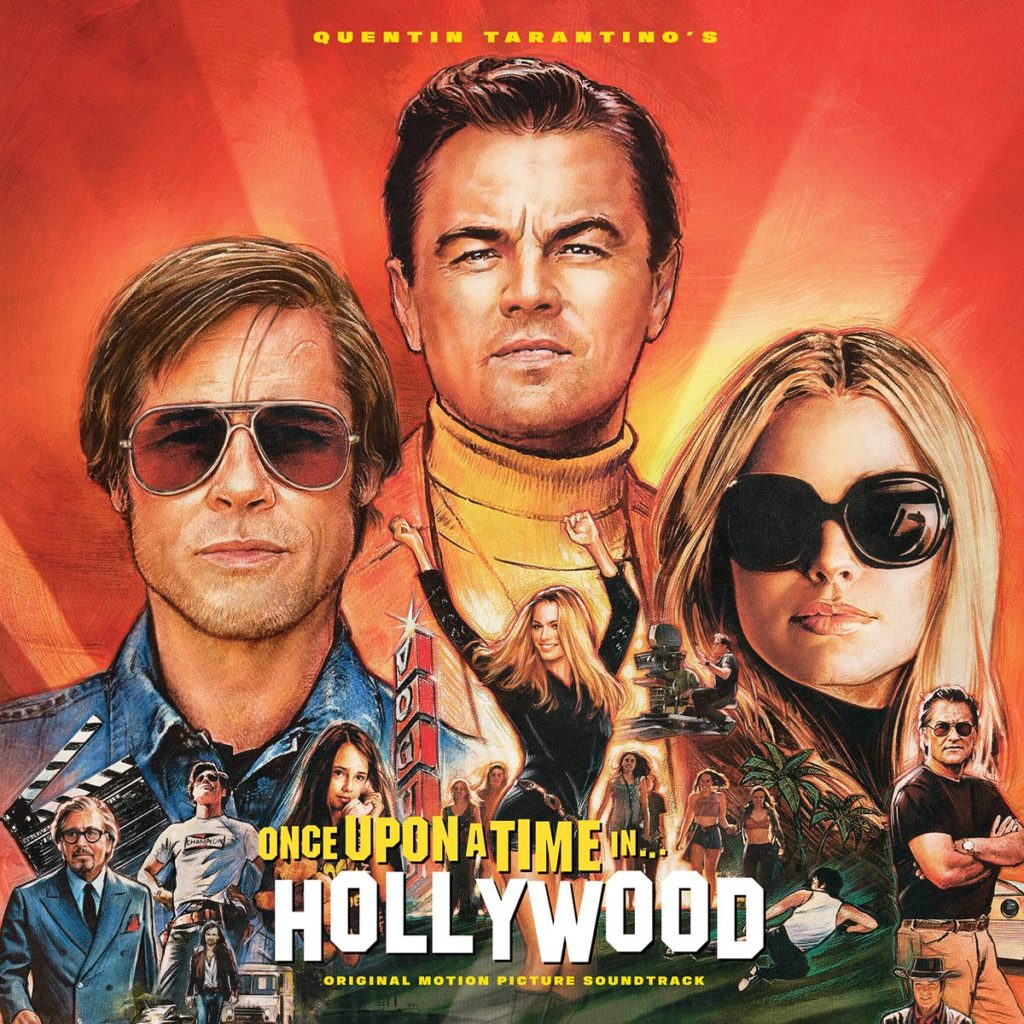Once Upon a Time… Tarantino Fails to Disappoint
Once Upon a Time… in Hollywood delivers Tarantino’s classic storytelling, this time reimagining the Manson murders in California in the late 1960’s.
Quentin Tarantino has built an impressive reputation for exceptional storytelling, from Pulp Fiction to Django Unchained, winning two Oscars in the process. In his films, he treads between historical and fantastical to create wonderfully violent catharsis for Tarantino as well as the audience, and always with a killer soundtrack.
Bursts of violence contribute to Tarantino’s signature grotesquely comedic style. The topics he deals with shouldn’t be funny, but they are. His uniquely designed characters and their quirks make this violence even more comedic in an intangible way that makes Tarantino such a genius.
In his ninth film Once Upon a Time… in Hollywood, Tarantino reimagines the Manson family murders of Sharon Tate (Margot Robbie) and her four house guests on August 8,1969, when four of Charles Manson’s followers broke into her home on Cielo Drive.
Once Upon a Time is one of Tarantino’s best projects to date, on par with both volumes of Kill Bill and a large improvement from Django Unchained.
Tarantino plays with the audience’s preexisting knowledge of the Manson murders to build expectations surrounding Tate’s eventual murder, following the lives of former TV star Rick Dalton (Leonardo DiCaprio) and his stunt double Cliff Booth (Brad Pitt) as they adjust to the Golden Age of Hollywood coming to a close. Dalton’s show is old, and he is forced to turn to spaghetti westerns and guest appearances on other shows, a humiliating act for Dalton.
Full of witty dialogue, the chemistry Tarantino has built with Pitt and DiCaprio shines through making the movie all the better. Pitt has previously worked with Tarantino on Inglourious Basterds, and DiCaprio starred in Django Unchained.
Though DiCaprio and Pitt dominate the screen time, Robbie’s portrayal of Tate’s character is arguably the most interesting: an enigma moving in and out of the storyline, never playing a major role in the lives of Dalton and Booth. Instead, she’s the projection of Dalton’s dream life: a well put together, successful movie star who has adapted to a changing Hollywood.
Dalton struggles internally with his career’s future through alcoholism. This description sounds depressing, but it’s actually very funny. Tarantino addresses real problems the characters face with a comedic lens, but he still does not delegitimize the magnitude of the conflicts. It’s a style people have grown to love, and it’s what makes Tarantino one of the most polarizing filmmakers in Hollywood.
Tate’s perfection makes the buildup to the movie’s final act so painful. She’s somewhat of a whimsical character in this story, floating in and out without any real impact on the plot. She is too perfect to play into the lives of Dalton and Booth.
She is a character without flaws, which makes it even more painful for the audience members who know the Manson family will eventually kill her.
But then, Tate isn’t killed. Instead, the Manson family chooses another victim. The next sequence of Booth and his well trained dog killing the intruders is classic Tarantino violence. While watching Booth tripping on acid while smashing a young woman’s head into every hard surface imaginable, it’s almost impossible not to remember Lieutenant Aldo Raine (also Brad Pitt) hunting nah-tzees in Tarantino’s Inglourious Basterds.
The “fight scene”, if you could call it that, ends perfectly as the final intruder stumbles into the pool, flailing a gun over her head, where an oblivious Dalton is listening to music and drinking a tall margarita. He calmly stands up, retrieves his flamethrower (a clear reference to Basterds earlier in the film), and torches the cult-member until she sinks into the pool.
This sequence is exactly what I expected from Tarantino coming into this movie, and he exceeded my expectations. The violence wasn’t as gratuitous and persistent as his previous projects, but it still had his signature creative killings and fights.
Tarantino prepared the entire audience for the epic battle between Sharon Tate and her killers, with the audience craving empowerment for Tate, both as a character and a real person. But then Tarantino kills that anticipation when Tate is not killed.
However, the violence and victory that would come with Tate fighting off her murderers would actually somewhat belittle the real Sharon Tate, who was over eight months pregnant when three armed intruders killed her in the middle of the night.
There’s no way she, or anyone, would have won that fight. To rewrite Tate’s character as a classic Tarantino-hero sensationalizes a real woman whose life was cut short by one of the most notorious cult leaders in American history.
Sharon Tate is no longer known for her acting, modeling or personal life. She is known as Charles Manson’s most notorious victim. Her legacy does not need to be empowered by a false identity of a badass vigilante. That would be a complete reinvention of Tate, not empowerment. The film gives Sharon Tate the happy ending she deserves, the “happily-ever-after” to compliment the film’s title, Once Upon a Time.
Tarantino ultimately empowers the real Sharon Tate by returning a piece of her legacy, of a carefree 1960’s: a legacy completely void of Charles Manson.




